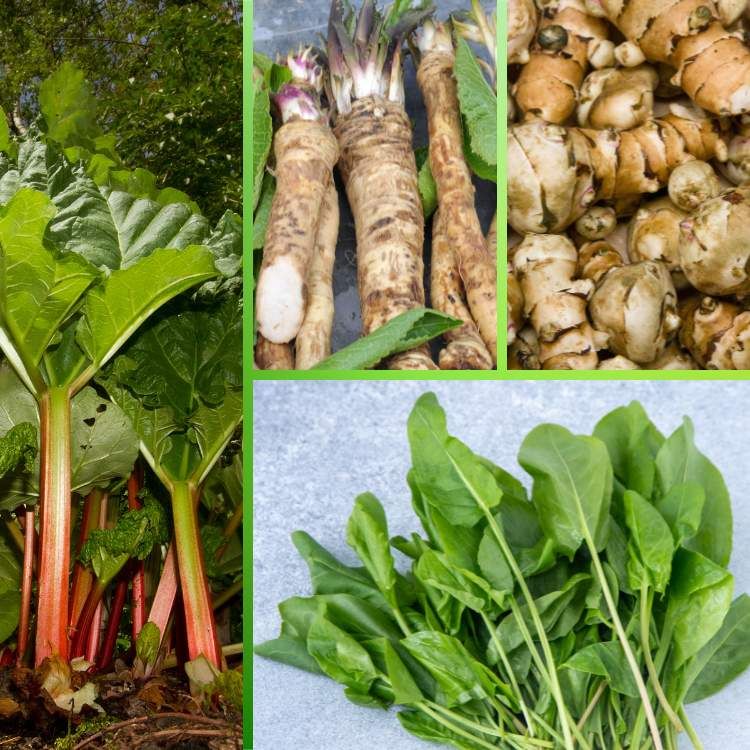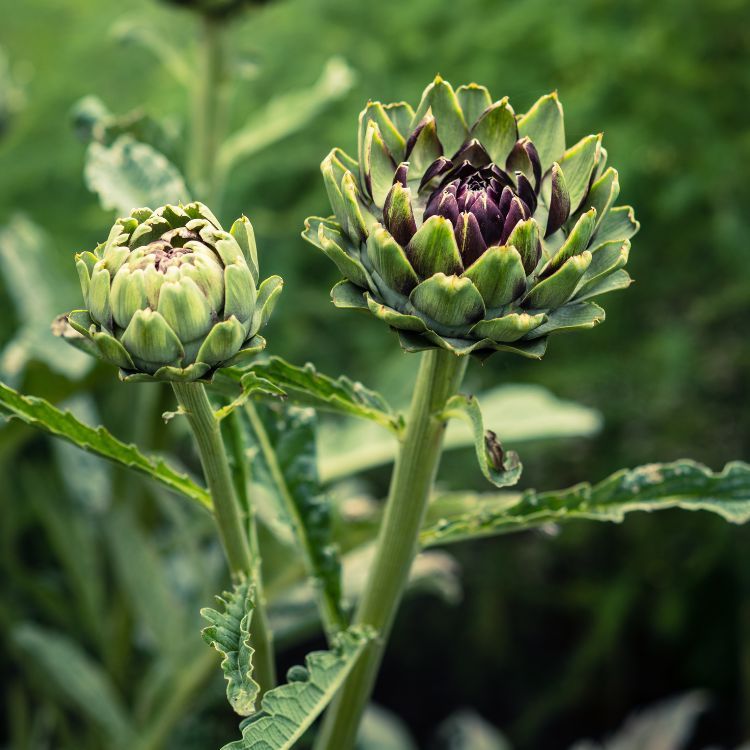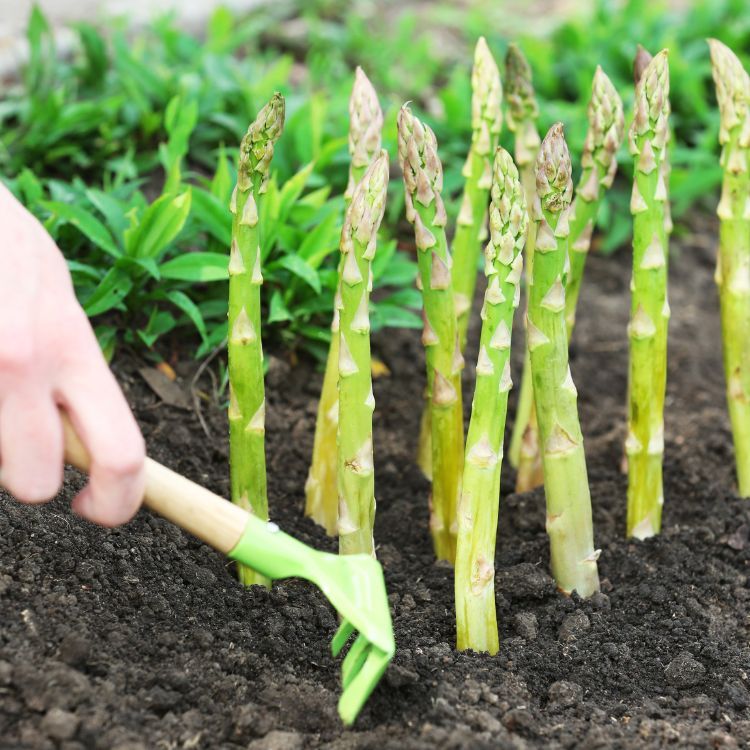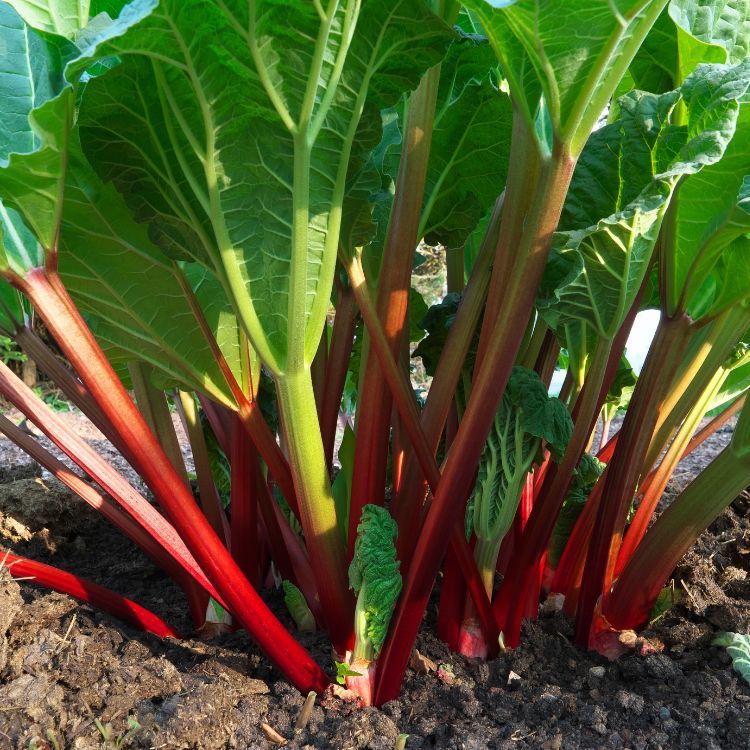
Key Takeaways
Perennial vegetable guilds are self-sustaining gardens that require minimal upkeep after initial planting.
These gardens are not only eco-friendly but also provide a continuous supply of fresh produce.
Choosing the right plants for your climate and soil type is essential for a thriving perennial garden.
Soil preparation and thoughtful design are the cornerstones of a successful perennial vegetable guild.
By incorporating companion planting and natural pest management, you can create a harmonious and productive ecosystem.
Welcome to the world of perennial vegetable guilds, where the harmony of nature meets the bounty of the garden. If you’re looking to dive into a gardening approach that’s both sustainable and rewarding, you’ve come to the right place. Let’s embark on a journey to create a self-sustaining food system right in your backyard.
Defining Perennial Vegetable Guilds
So, what exactly is a perennial vegetable guild? Think of it as a team of plants that work together to create a robust and self-maintaining ecosystem. Unlike annuals, which you plant and harvest within a single year, perennials come back year after year, getting stronger each time. A guild is more than just a group of plants; it’s a strategic assembly where each member contributes to the health and productivity of the whole.
Most importantly, a guild mimics natural ecosystems, leveraging the strengths of each plant to minimize labor and maximize yield. You might have a tall tree providing shade for heat-sensitive herbs, while deep-rooted plants bring up nutrients for their shallow-rooted companions. This interplay creates a garden that’s more resilient and less reliant on external inputs.
The Perks of Going Perennial
Why go perennial? Besides the joy of seeing your garden return with vigor each spring, there are plenty of benefits:
Sustainability: Perennial plants often require less water and fewer resources than annuals once established.
Soil health: Their deep root systems prevent soil erosion and improve soil structure over time.
Biodiversity: A variety of plants attracts beneficial insects and wildlife, promoting a balanced ecosystem.
Less work: After the initial effort of planting, perennials need less maintenance, giving you more time to enjoy your garden.
Extended harvest: Many perennials have longer productive seasons, offering you a bounty of fresh produce throughout the year.
Starting Your Perennial Garden
Embarking on the perennial path begins with a plan. You’ll want to consider your available space, the amount of sunlight it receives, and your local climate. Perennial vegetables come in all shapes and sizes, and some will be better suited to your garden’s conditions than others.
Selecting the Right Vegetables for Your Climate
Before you start digging, take a moment to think about what will grow best in your region. If you’re in a cooler climate, hardy vegetables like rhubarb and horseradish will thrive. Warmer areas might do well with sweet potatoes and perennial onions. Here’s a tip: local native plants are often a good indicator of what will grow well in your garden.
Here’s a quick list to get you started:
If you have cold winters, try asparagus, rhubarb, or Jerusalem artichokes.
For milder climates, look at globe artichokes, chayote, or perennial leeks.
In tropical areas, cassava, taro, and Malabar spinach can be excellent choices.
Remember, the key to a successful perennial vegetable guild is diversity, so don’t be afraid to experiment with different plants to see what works best for you.
Soil Preparation and Bed Design
Great soil is the foundation of any garden, but it’s particularly important for perennials, which will live in the same spot for years. You’ll want to start with a soil test to determine pH and nutrient levels. Amend your soil accordingly with organic matter like compost or well-rotted manure to give your plants the best start.
When designing your beds, think about accessibility and sunlight. You’ll want to place taller plants to the north or west of smaller ones to prevent shading. Also, consider how you’ll move through your garden to harvest and care for your plants. Pathways should be wide enough for easy access, and beds narrow enough that you can reach the center without stepping into them.
Planting and Initial Care
Once you’ve prepared your beds, it’s time to plant. Early spring or fall, depending on your climate, is usually the best time to get perennials in the ground. When planting, give each plant enough space to reach its full size. This might mean your garden looks a bit sparse at first, but trust me, it will fill in.
After planting, water your new perennials deeply to help establish roots. Mulching with straw or wood chips will conserve moisture and suppress weeds. In the first year, you’ll want to keep an eye on your plants and water them during dry spells. With a bit of care, you’ll set the stage for a garden that will flourish for years to come.
Perennial Vegetables to Anchor Your Guild
Every perennial garden needs its cornerstone species, the reliable producers that form the backbone of your food ecosystem. These plants are not only vigorous and hardy but also offer substantial yields over time. Let’s dive into some perennial favorites that can become the pillars of your garden guild.
Globe Artichokes: A Towering Treat

The globe artichoke, with its striking silver-green foliage and majestic flowering heads, is more than just a visual centerpiece. This perennial thistle is a powerhouse of nutrition, offering a harvest that extends from late spring into summer. To thrive, artichokes require full sun and well-draining soil. They’re particularly well-suited to mild, coastal climates but can be grown as annuals in colder zones.
When planting artichokes, space them about 3 to 4 feet apart to accommodate their size. They’ll need regular watering to establish deep roots, which will help them withstand dry periods in subsequent years. With proper care, a single artichoke plant can produce for up to five years, offering multiple harvests throughout the season.
Artichokes are not just for eating; they’re also beneficial for the garden. Their large leaves provide shade for sun-sensitive plants, and their deep roots mine the subsoil for nutrients, making them available to shallower-rooted companions. Plus, when left to flower, they’re a beacon for pollinators.
Asparagus: The Early Spring Spear

Asparagus is one of the first delights of the spring garden, with tender spears pushing through the soil as early as March. This perennial favorite is best planted in a dedicated bed, as it will produce for 20 years or more. Full sun and well-drained, fertile soil will give you the best results.
Plant asparagus crowns in trenches about 12 to 18 inches wide and 6 to 8 inches deep, spacing the crowns 1.5 to 2 feet apart. Cover them with soil and mulch to keep weeds at bay. Patience is key with asparagus; refrain from harvesting in the first couple of years to allow the plants to establish a strong root system. But once they’re mature, you can enjoy a bountiful harvest each spring.
Rhubarb: The Tart and Hardy Perennial

Rhubarb is another early producer, famous for its tangy flavor that’s perfect for pies and preserves. It’s incredibly hardy and can tolerate temperatures down to -20°F, making it suitable for cooler climates. Rhubarb prefers full sun but will tolerate partial shade, and it thrives in rich, well-drained soil.
Space rhubarb plants about 3 feet apart and be sure to harvest the stalks by twisting them off at the base to prevent damage to the crown. Leave at least two-thirds of the stalks on the plant to ensure continued growth. As a bonus, rhubarb leaves are large and can suppress weeds, while their deep roots break up hard soil.
Example: My neighbor Sarah has a stunning perennial vegetable patch. Last year, her artichoke plants grew taller than her six-year-old son, and the asparagus she harvested filled several baskets over the season. She credits her success to diligent soil preparation and selecting the right plants for our Pacific Northwest climate.
With these perennial vegetables as the mainstay of your garden, you’ll have a strong foundation to build upon. They’ll provide structure, nutrients, and a steady supply of food, year after year.
Supporting Players in Your Guild
Beyond the main producers, a successful guild includes a cast of supporting players that fill various niches in the garden. These plants enhance the overall health and productivity of the guild by attracting beneficial insects, fixing nitrogen, and providing mulch material.
Companion Herbs and Flowers
Herbs and flowers play a critical role in any perennial guild. They attract pollinators and beneficial insects that help with pest control, and some, like comfrey and yarrow, accumulate nutrients that enrich the soil. Here’s a list of some great companions:
Chives: Their oniony scent can deter pests, and their purple flowers are a hit with pollinators.
Lavender: Its fragrant blooms attract beneficial insects and can be harvested for culinary or medicinal use.
Calendula: This flower is not only beautiful but also has strong antifungal properties that can help protect your vegetables.
Decomposers and Soil Builders
A healthy soil ecosystem is vital for perennial gardens. Incorporating decomposers and soil builders, like worms and fungi, can dramatically improve soil fertility. Mulching with wood chips or straw can encourage these beneficial organisms, while plants like comfrey, with their deep roots, can bring up nutrients from the subsoil.
Don’t forget about cover crops like clover or alfalfa, which can fix nitrogen in the soil and provide organic matter. Interspersing these throughout your garden can give your perennials a significant boost.
These supporting players may not be the stars of the show, but their contributions are invaluable. They ensure that your garden is a thriving ecosystem where every plant, from the tallest artichoke to the smallest clover, plays a part in creating a sustainable whole.
Expanding and Diversifying Your Perennial Garden
Once you’ve got the basics down, it’s time to think bigger. Expanding your perennial garden not only increases your yield but also strengthens the ecosystem you’re cultivating. Introducing new varieties and plant types can fill gaps in your garden’s production cycle, providing you with a continuous harvest and a landscape that’s a feast for the eyes as well as the table.
Adding Fruit Trees and Berry Shrubs
Fruit trees and berry shrubs are natural allies to perennial vegetables. They offer shade, attract pollinators, and some, like apple trees, can even serve as windbreaks. Berry shrubs such as raspberries and blackberries can be pruned to create living fences that define spaces within your garden. When choosing fruit trees, consider dwarf or semi-dwarf varieties for easier harvesting.
Introducing New Varieties Over Time
As your garden matures, keep an eye out for gaps in production or areas where biodiversity could be improved. Introducing new varieties can help. For example, if you notice that your garden could use more ground cover to suppress weeds, consider adding strawberries or creeping thyme to the mix.
When introducing new plants, observe how they interact with your existing garden members. Some may become fast friends, while others might not get along. It’s all part of the learning process and will help you fine-tune your garden to perfection.
Remember, a diverse garden is a resilient garden. By incorporating a mix of perennial vegetables, fruits, and herbs, you’ll create a self-sustaining ecosystem that’s more than the sum of its parts.
Frequently Asked Questions
How Long Do Perennial Vegetables Take to Establish?
Perennial vegetables can take a bit longer to establish than annuals. Asparagus, for example, may take 2-3 years before you can start harvesting. However, the wait is worth it, as perennials provide yields for many years once established. It’s a long-term investment in your garden’s future.
Can Perennial Vegetables Grow in Shade?
While most vegetables prefer full sun, some perennials can tolerate partial shade. Good options for shadier spots include rhubarb, which can thrive with just a few hours of sun per day, and sorrel, which actually prefers a bit of shade to prevent the leaves from becoming too tough.
Rhubarb: Thrives in partial shade
Sorrel: Prefers some shade in hotter climates
Assess your space and choose plants that will be happy with the amount of light you can provide.
What Are the Best Perennial Vegetables for Cold Climates?
In colder climates, you’ll want to focus on hardy vegetables that can withstand freezing temperatures. Some of the best options include effective cold frame gardening techniques to protect your plants.
Horseradish: Survives in zones 3-9
Rhubarb: Hardy in zones 3-8
Jerusalem artichokes: Thrive in zones 3-9
These plants are not just survivors; they’re often the first to greet you in the spring, pushing through the last snows to bring life back to your garden.
How Do You Design a Perennial Vegetable Guild?
Designing a perennial vegetable guild requires observation and planning. Start by assessing your space, understanding your climate, and determining the needs of your plants. Group plants with similar needs together and consider their mature sizes. Use taller plants to provide shade for smaller, shade-tolerant species. Include plants that fix nitrogen, attract beneficial insects, and repel pests to create a balanced ecosystem.
Are Perennial Vegetable Guilds Suitable for Urban Gardens?
Absolutely! Even if you have limited space, you can create a mini perennial vegetable guild. Containers and vertical gardens are great options for urban settings. Choose compact varieties and consider using trellises for vining plants like grapes or kiwis. Urban gardens can be incredibly productive and are a fantastic way to bring nature into the city.
By now, you should have a solid understanding of what it takes to create and maintain a perennial vegetable guild. From soil preparation to plant selection, and from initial care to expansion, you’re equipped with the knowledge to start your own sustainable food system. Embrace the process, enjoy the journey, and relish the rewards of your eco-conscious garden.
Remember, the key to a successful perennial garden is patience and observation. Watch how your garden grows, learn from it, and adjust as needed. With time, you’ll have a lush, productive, and low-maintenance garden that’s a testament to the power of working with nature.







Leave a Reply